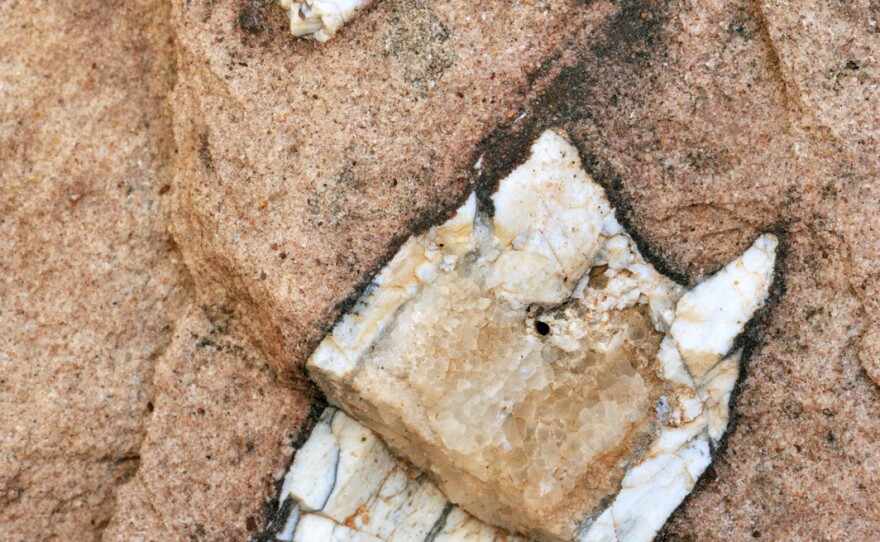Here’s some of that grey rock, it’s coming down the channel – your first clue. It’s all about discovery …..
Twenty-five years ago, I parked near Black Mesa, up in northeast Arizona. On no particular schedule and with no real destination, I just started walking--because I knew I would discover something. I wandered up an unnamed canyon with walls of sheer Navajo Sandstone.
The Navajo is rock laid down during the Jurassic, across parts of what are now Arizona, Utah, and western Colorado. Conditions 190 million years ago have often been compared to today’s Sahara Desert. But the Jurassic sand dunes were hundreds, even thousands, of feet thick, much thicker than what’s now found in Africa. The sand was nearly pure silica, cemented with lime. The Navajo would have been white, but it’s since been laced with hematite and limonite, painting the rock yellow and red. Here on the Navajo Reservation where geologists first named the formation, it’s a soft pinkish-tan. The walls are decorated with graceful lines that faithfully trace the curve and curl of ancient winds. These crossbeds are a hallmark of the Navajo Sandstone--and a tell-tale sign that this entire region was an empty, almost-sterile, desert.
Almost sterile. Animals occasionally scratched tracks that were preserved in the sheets of sand. And a few bones have been found. In the 1930s a Navajo shepherd, Max Littlesalt, showed some to paleontologist Charles Camp. Camp published a description of a goose-sized dinosaur he called Segisaurus, with a long neck and thick body, agile and hungry enough to chase and eat insects. But bones are rare in this rock. Unlike other Jurassic formations on the Colorado Plateau, sands of the Navajo just weren’t a good medium for fossilization.
So there I was, climbing up through an endless repetition of tan cross-bedded layers of the Navajo. Near the back of the canyon, I came upon a grey lens of rock no bigger than my bedroom floor. Instead of cross-beds created by wind, this rock had the thin, even bedding that would have formed at the bottom of a pool of water. A tiny oasis. In the desert.
And at my feet were two bones, side by side, eroding out of that grey rock. The shaft of the larger one--about 3 or 4 inches long--was exposed in exquisite detail. Maybe a tibia, and that smaller one the fibula? There they were, staring up at me across an unimaginable amount of time--like the earth’s auto-focus mechanism had just snapped out of the present and hurled me almost two hundred million years back into the past.
Now, twenty-five years later, we’re back. It took a bit of looking to dust off those old memories. Finally, in the fourth canyon we tried, there were those same fossils--eroded a little more by water that occasionally runs down the bottom of this canyon--but so far still in place. And this time I spied another new piece of bone, now exposed a couple feet away.
Are these the bones of a theropod, one of the dinosaurs that wandered through the desert of the Four Corners region during the Jurassic? If so, you’ve got to wonder: did the scent of water lead the animal to this oasis? What were its last dim thoughts as it slipped beneath the surface? And what else remains to be found when you just go out for a walk one day?



